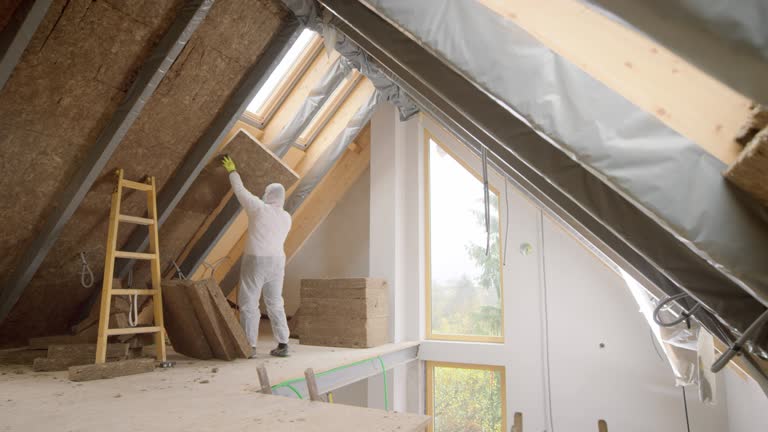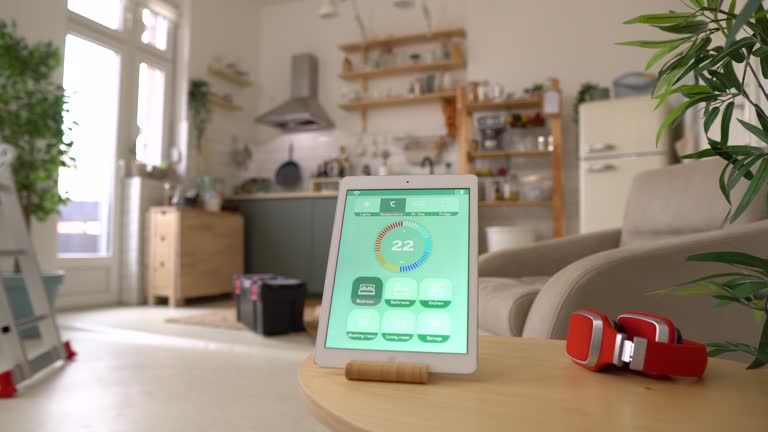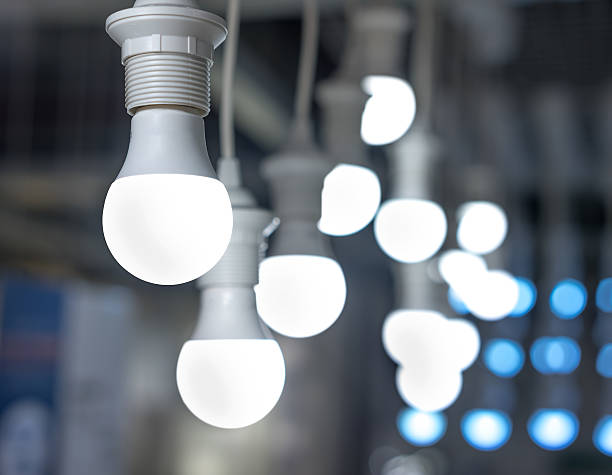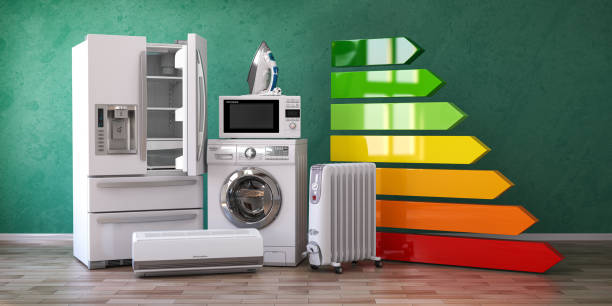1. Introduction to Energy Efficiency: The Need for Energy Savings at Home
Energy efficiency means achieving the same tasks with less energy than before. It not only reduces your utility bills but is also great for the environment. In today’s age, where energy resources are limited, and the threat of climate change is increasing, making your home energy-efficient has become a necessary step.
An energy-efficient home means using the least amount of energy in your home while getting the most out of it. This method helps you save money and increases the value of your home. In this article, we will discuss key measures you can take to make your home more energy efficient.
2. The Importance of Insulation in the Home

Insulation is the first and most important step in making your home energy efficient. The function of insulation is to retain heat in your home, so your house stays cool in the summer and warm in the winter. This reduces your heating and cooling bills, as the temperature in your home remains stable for longer.
For this, you should insulate the roof, walls, floors, and windows of your home. Various types of insulation materials are available in the market, such as fiberglass, foam boards, and cellulose. The selection of these materials depends on the design and budget of your home.
3. Using Energy Efficient Windows and Doors
Windows and doors directly impact your home’s energy efficiency. Poor-quality windows and doors allow heat to escape, and outside heat or cold to enter. To solve this problem, you should install energy-efficient windows and doors.
Double-glazed or triple-glazed windows prevent heat loss and make your home energy efficient. Similarly, insulated doors help in preventing energy loss in your home. If you can’t replace old windows and doors, properly sealing them is a good way to increase energy efficiency.
4. Taking Advantage of Solar Energy
If you’re serious about making your home energy-efficient, installing solar panels is a great option. Solar panels convert direct sunlight into electricity, which can meet your home’s energy needs. Although it is an initial investment, the long-term benefits are significant.
Solar panels can significantly reduce your electricity bills. If your home is large and you need more electricity, you can install a hybrid solar system that uses a mix of solar and grid electricity.
5. Using a Smart Thermostat

Smart thermostats are a great example of modern technology that helps in energy efficiency. These devices intelligently manage your home’s heating and cooling systems, preventing unnecessary energy waste. Smart thermostats understand your daily routine and adjust themselves accordingly.
You can also control your smart thermostat via your smartphone, allowing you to manage the temperature even when you’re away from home. This significantly reduces your heating and cooling bills.
6. Choosing Energy-Efficient Appliances
Another way to make your home energy-efficient is by selecting energy-efficient appliances. Today, there are appliances available in the market that consume less electricity while providing greater benefits. You should check the energy rating of appliances such as refrigerators, washing machines, air conditioners, and dishwashers.
A-grade or Energy Star certified appliances help you save energy. These appliances perform their tasks using the least amount of electricity, which reduces your electricity bill and positively impacts the environment.
7. Upgrading Lighting: Using LED Bulbs

Traditional incandescent bulbs consume more energy and provide less light. In comparison, LED bulbs are brighter and consume less energy. You should upgrade your home’s lighting and use LED bulbs everywhere.
LED bulbs also have a longer life, meaning you won’t need to replace them frequently. This not only reduces your bill but also lowers your maintenance costs.
8. Making Your Water Heating System Energy Efficient
Water heating is a process that consumes a significant portion of energy in the home. Therefore, you should focus on making your water heating system energy-efficient. Tankless water heaters are now available, which provide hot water on demand and only consume energy when needed.
Additionally, solar water heaters are also a good option, using sunlight to heat water. Although it’s an initial investment, it offers significant energy savings in the long term.
9. Checking Air Sealing in Your Home
Many homes have air leaks that cause energy waste. Air leaks force your heating and cooling system to work harder, increasing energy consumption. You should check the air sealing in your home and seal any air leaks.
Windows, doors, ducts, and attic hatches are areas where air leaks can occur. You can use weatherstripping and caulking to seal these areas. This small investment can significantly improve your home’s energy efficiency.
10. The Benefit of Energy Audits
An energy audit is a great way to evaluate your home’s energy efficiency. In this process, a professional thoroughly examines your home and highlights areas where energy is being wasted. After the energy audit, you receive a detailed report with suggestions for improvements.
An energy audit helps you understand how energy-efficient your home is and where you can make improvements. It is a one-time investment, but it can save you a lot of money in the future.
11. Choosing Renewable Energy Sources
Renewable energy sources, such as wind energy and geothermal energy, are good options for making your home energy-efficient. These sources use natural resources and are environmentally friendly. If you use renewable energy sources in your home, you can significantly reduce energy costs.
For this, you should choose renewable energy sources based on your home’s location and available resources. While it may be an initial investment, it will benefit you greatly in the long term.
12. Home Design and Layout
The design and layout of your home also play an important role in energy efficiency. You should design your home to maximize the use of sunlight and natural ventilation. This reduces the need for artificial heating, cooling, and lighting, which helps improve energy efficiency.
South-facing windows, open floor plans, and high ceilings are some design elements that can enhance your home’s energy efficiency. If you’re building a new home, be sure to discuss energy-efficient design with your architect.
13. The Impact of Landscaping on Energy Efficiency
Landscaping also affects your home’s energy efficiency. You can plant trees and plants around your home that provide shade in the summer and don’t block sunlight in the winter. This is a natural way of cooling and heating that can reduce energy consumption.
Additionally, you should use materials that don’t absorb heat, such as light-colored pavements and reflective roofing. These small changes can help make your home more energy-efficient.
14. Behavior Changes and Energy Efficiency
Often, technical improvements are made for energy efficiency, but there is no change in the behavior of the household members. If you want to make your home energy-efficient, you will need to make some changes in your behavior. For example, don’t leave lights on unnecessarily, don’t leave appliances in standby mode, and don’t waste water.
These small habits can significantly improve your home’s overall energy efficiency. Every small change has a big impact, so you should focus on these changes.
15. Benefits and Long-Term Advantages of Energy Efficiency
The benefits of energy efficiency are numerous in the long term. Immediately, you’ll see lower utility bills and an environmentally friendly lifestyle. But in the long term, your home will increase in value due to being energy-efficient, which will be beneficial when reselling.
Energy efficiency provides you with a sustainable lifestyle, which is very important in today’s world. It is also beneficial for your family and future generations because you are contributing to protecting the environment.
